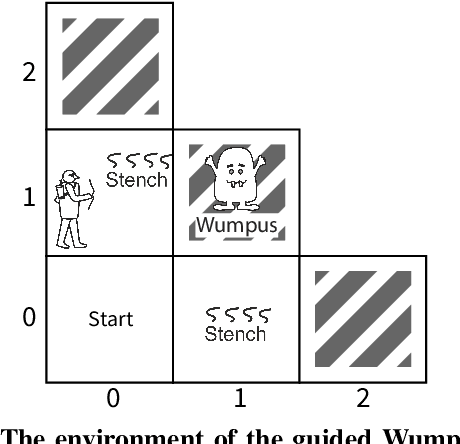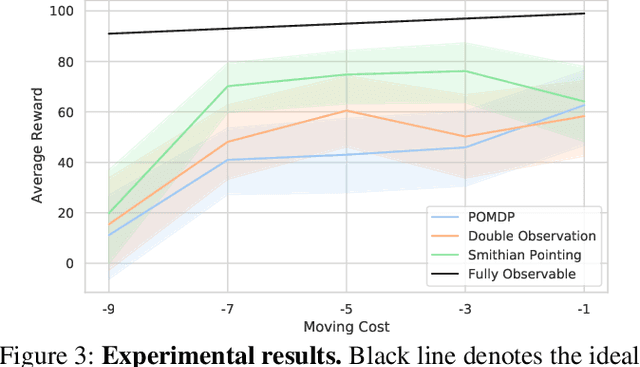Federico Rossano
AlphaChimp: Tracking and Behavior Recognition of Chimpanzees
Oct 22, 2024Abstract:Understanding non-human primate behavior is crucial for improving animal welfare, modeling social behavior, and gaining insights into both distinctly human and shared behaviors. Despite recent advances in computer vision, automated analysis of primate behavior remains challenging due to the complexity of their social interactions and the lack of specialized algorithms. Existing methods often struggle with the nuanced behaviors and frequent occlusions characteristic of primate social dynamics. This study aims to develop an effective method for automated detection, tracking, and recognition of chimpanzee behaviors in video footage. Here we show that our proposed method, AlphaChimp, an end-to-end approach that simultaneously detects chimpanzee positions and estimates behavior categories from videos, significantly outperforms existing methods in behavior recognition. AlphaChimp achieves approximately 10% higher tracking accuracy and a 20% improvement in behavior recognition compared to state-of-the-art methods, particularly excelling in the recognition of social behaviors. This superior performance stems from AlphaChimp's innovative architecture, which integrates temporal feature fusion with a Transformer-based self-attention mechanism, enabling more effective capture and interpretation of complex social interactions among chimpanzees. Our approach bridges the gap between computer vision and primatology, enhancing technical capabilities and deepening our understanding of primate communication and sociality. We release our code and models and hope this will facilitate future research in animal social dynamics. This work contributes to ethology, cognitive science, and artificial intelligence, offering new perspectives on social intelligence.
ChimpACT: A Longitudinal Dataset for Understanding Chimpanzee Behaviors
Oct 25, 2023Abstract:Understanding the behavior of non-human primates is crucial for improving animal welfare, modeling social behavior, and gaining insights into distinctively human and phylogenetically shared behaviors. However, the lack of datasets on non-human primate behavior hinders in-depth exploration of primate social interactions, posing challenges to research on our closest living relatives. To address these limitations, we present ChimpACT, a comprehensive dataset for quantifying the longitudinal behavior and social relations of chimpanzees within a social group. Spanning from 2015 to 2018, ChimpACT features videos of a group of over 20 chimpanzees residing at the Leipzig Zoo, Germany, with a particular focus on documenting the developmental trajectory of one young male, Azibo. ChimpACT is both comprehensive and challenging, consisting of 163 videos with a cumulative 160,500 frames, each richly annotated with detection, identification, pose estimation, and fine-grained spatiotemporal behavior labels. We benchmark representative methods of three tracks on ChimpACT: (i) tracking and identification, (ii) pose estimation, and (iii) spatiotemporal action detection of the chimpanzees. Our experiments reveal that ChimpACT offers ample opportunities for both devising new methods and adapting existing ones to solve fundamental computer vision tasks applied to chimpanzee groups, such as detection, pose estimation, and behavior analysis, ultimately deepening our comprehension of communication and sociality in non-human primates.
Understanding Embodied Reference with Touch-Line Transformer
Oct 12, 2022



Abstract:We study embodied reference understanding, the task of locating referents using embodied gestural signals and language references. Human studies have revealed that objects referred to or pointed to do not lie on the elbow-wrist line, a common misconception; instead, they lie on the so-called virtual touch line. However, existing human pose representations fail to incorporate the virtual touch line. To tackle this problem, we devise the touch-line transformer: It takes as input tokenized visual and textual features and simultaneously predicts the referent's bounding box and a touch-line vector. Leveraging this touch-line prior, we further devise a geometric consistency loss that encourages the co-linearity between referents and touch lines. Using the touch-line as gestural information improves model performances significantly. Experiments on the YouRefIt dataset show our method achieves a +25.0% accuracy improvement under the 0.75 IoU criterion, closing 63.6% of the gap between model and human performances. Furthermore, we computationally verify prior human studies by showing that computational models more accurately locate referents when using the virtual touch line than when using the elbow-wrist line.
Individual vs. Joint Perception: a Pragmatic Model of Pointing as Communicative Smithian Helping
Jun 03, 2021


Abstract:The simple gesture of pointing can greatly augment ones ability to comprehend states of the world based on observations. It triggers additional inferences relevant to ones task at hand. We model an agents update to its belief of the world based on individual observations using a partially observable Markov decision process (POMDP), a mainstream artificial intelligence (AI) model of how to act rationally according to beliefs formed through observation. On top of that, we model pointing as a communicative act between agents who have a mutual understanding that the pointed observation must be relevant and interpretable. Our model measures relevance by defining a Smithian Value of Information (SVI) as the utility improvement of the POMDP agent before and after receiving the pointing. We model that agents calculate SVI by using the cognitive theory of Smithian helping as a principle of coordinating separate beliefs for action prediction and action evaluation. We then import SVI into rational speech act (RSA) as the utility function of an utterance. These lead us to a pragmatic model of pointing allowing for contextually flexible interpretations. We demonstrate the power of our Smithian pointing model by extending the Wumpus world, a classic AI task where a hunter hunts a monster with only partial observability of the world. We add another agent as a guide who can only help by marking an observation already perceived by the hunter with a pointing or not, without providing new observations or offering any instrumental help. Our results show that this severely limited and overloaded communication nevertheless significantly improves the hunters performance. The advantage of pointing is indeed due to a computation of relevance based on Smithian helping, as it disappears completely when the task is too difficult or too easy for the guide to help.
 Add to Chrome
Add to Chrome Add to Firefox
Add to Firefox Add to Edge
Add to Edge